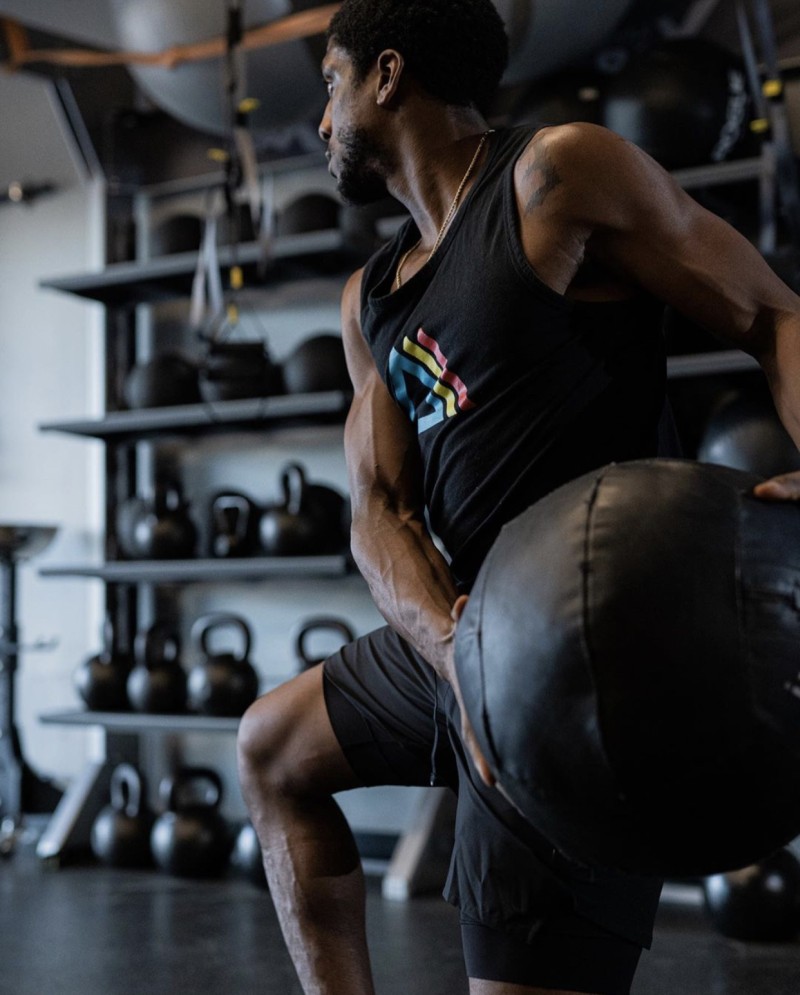


Lunges are one of the best and most basic lower body exercises; we’ve always got them in our rotation, and here are some very good reasons why:
They are a functional exercise, which means that they utilize movements that you’d make during the day. We love functional exercises because you’re building up strength for the muscles and joints that you use in everyday activities.
Lunges are also a unilateral exercise, so they work out one side of your body at a time, so if one side is weaker, it’s easy to isolate and fix that.
If you’ve done lunges, you know that they not only test your strength, but also your balance.
You not only work out your legs and glutes, you also work out your core and open up your hip flexors, helping you work on hip mobility.
So if you didn’t know already, now you know! This is why lunges are one of my go-to exercises.
If you’ve already mastered and feel comfortable with your basic lunge, doing different variations will challenge different muscles. I’ve put together a list of some of the more easy-to-learn lunge variations for you to try at home. Feel free to do these with weights or resistance bands as you get more practice.
Reverse Lunges
These lunges are actually easier to do and they put less stress on your knees. It works out your gluteus maximus, hamstrings, quads, calves, and core.
Directions: Exactly what it sounds like–instead of stepping forward, step back with one foot, landing on the ball of your foot (heel completely off the floor). Bend both knees and lower until your shin on the back leg is almost parallel to the ground. Come back up by pushing through the heel of the front foot.
Alternating Forward to Reverse Lunge (also called Pendulum Lunge)
Basically a combination of a reverse and forward lunge. This is the ultimate test of balance!
Directions: Lunge forward with your right foot. Do not touch the floor with your right foot when you come back in standing position, but instead, transition straight into a reverse lunge with your right foot. (You can let your right foot touch the ground as you’re getting used to balancing on one foot.)
Lateral Lunges
Great for working out a part of your butt that doesn’t generally get as much attention, the gluteus medius. This is also good for your hip adductors.
Directions: Start standing with your feet together and hands on your hips. With your right foot, take a big step out to the right. When the right foot lands on the floor, bend your right knee to lower into a lunge, making sure to push your butt back and bend at your hips. Push back up and return to the center and then repeat for more reps.
Curtsy lunge
Curtsy lunges will target your glute and thigh muscles because of the unusual way your legs will cross over when you do the exercise. Another great one to do if you want to strengthen all parts of the butt and feel some burn in the thighs.
Directions: Stand with feet shoulder width apart. Using your right leg, take a large step back behind you, crossing behind your left leg. Just like the name of this exercise, you want to feel like you’re taking a big curtsy. Lower your right knee toward the floor as your front knee (the left one) bends to almost 90 degrees. Your weight should mostly be in the front leg. Stand back up and return to starting position.
Jumping lunges
This is pretty intense and high-impact, so if you have knee or ankle problems, proceed with caution (or don’t proceed at all). These are definitely challenging and you’ll feel your legs burn out pretty quickly.
Directions: Go into a normal forward lunge, lowering down until both knees at 90-degree angles, and then, with explosive energy, jump up and switch your legs, landing as gently as possible and dropping down into a lunge but with legs in opposite positions. Continue to jump and switch your legs as fluidly as possible.
There are so many more lunge variations that you can try out, but these are some basic ones for today. These variations are easy to do at the beginner level but they still target different muscles and help to solidify your balance and control. Varying up exercises isn’t just about keeping things fun, it’s also about building some all-around strength. Not all muscles get a workout when you exercise, so it’s good to give your support muscles some love, too.